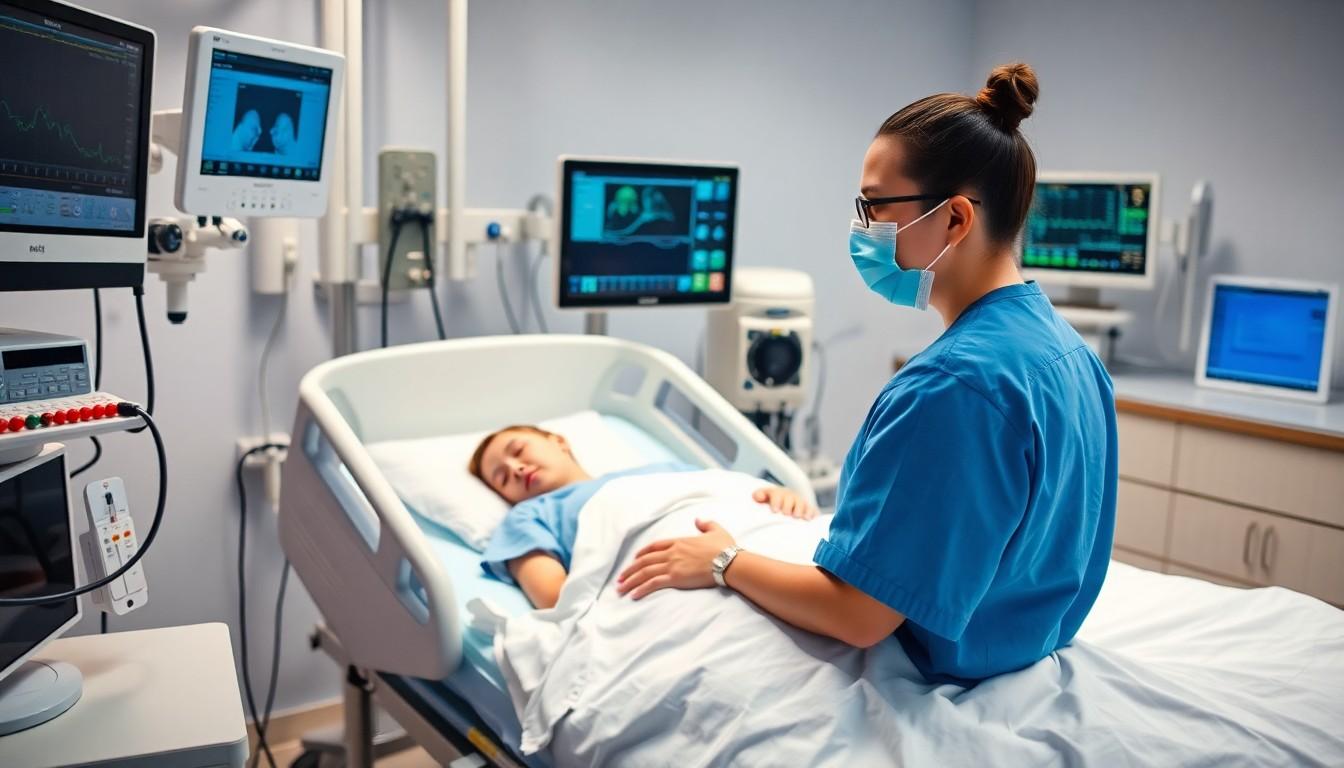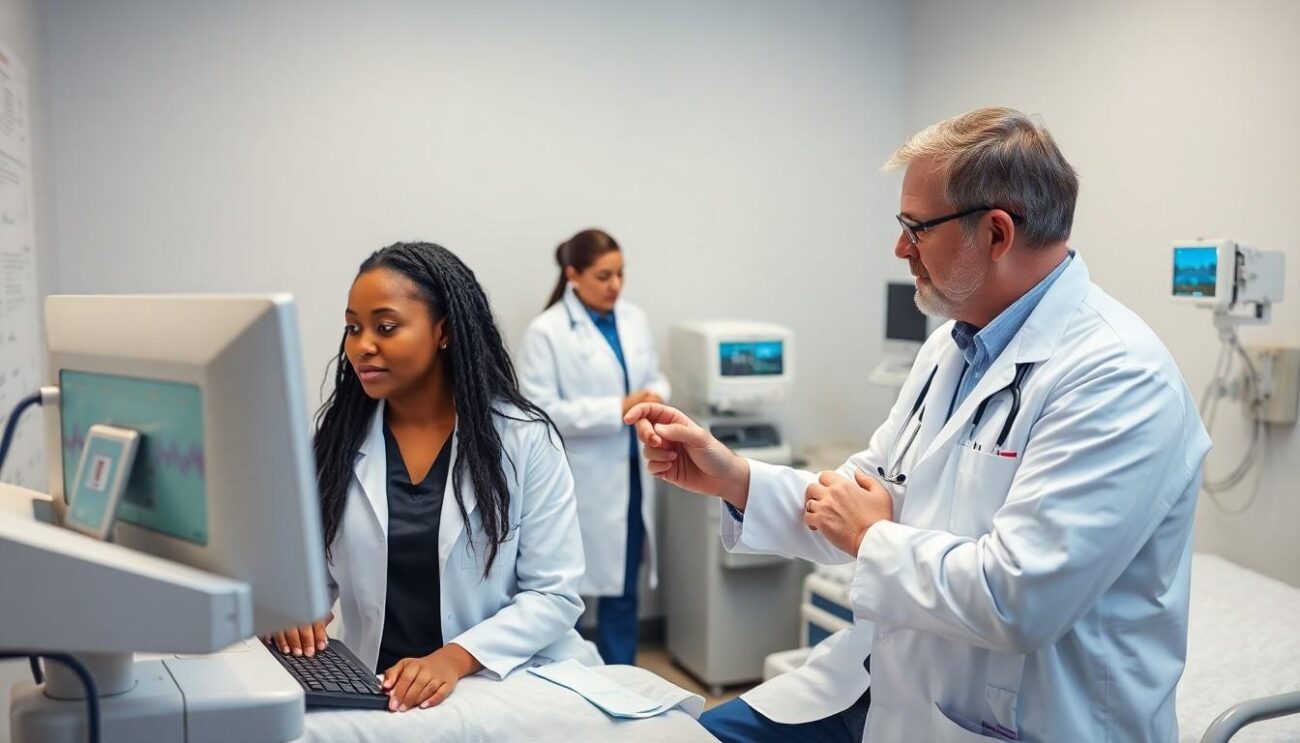Sleep technology has emerged as a fascinating career path in healthcare, offering opportunities to help people overcome sleep disorders and improve their quality of life. As more individuals seek treatment for sleep-related issues, the demand for qualified sleep technologists continues to grow.
For those interested in pursuing this rewarding career, understanding the educational timeline and requirements is essential. Becoming a certified sleep technologist involves a combination of formal education, clinical training, and professional certification – but the journey can vary depending on the chosen educational path and individual circumstances. While some candidates may complete their training in as little as six months, others might take up to two years to achieve full certification and begin their professional practice.
What Is a Sleep Technologist?
A sleep technologist is a healthcare professional who specializes in diagnosing and treating patients with sleep disorders through monitoring sleep patterns and analyzing sleep study data. These specialists work directly with patients in sleep laboratories and medical facilities to gather critical data about sleep-related conditions.
Key Responsibilities and Work Environment
Sleep technologists perform critical tasks in specialized sleep labs:
- Conduct overnight polysomnographic tests to monitor brain waves, heart rate, breathing patterns
- Calibrate and maintain sophisticated monitoring equipment used during sleep studies
- Set up diagnostic equipment including electrodes and sensors on patients
- Record detailed observations of patient sleep behavior and patterns
- Identify emergency situations such as cardiac arrhythmias or breathing difficulties
- Generate comprehensive reports for physicians and sleep specialists
- Educate patients about sleep study procedures and proper sleep hygiene
Work environments include:
- Hospital-based sleep centers
- Independent sleep laboratories
- Private medical practices
- Research facilities
A typical work schedule consists of:
- 10-12 hour overnight shifts (7 p.m. to 7 a.m.)
- 3-4 shifts per week
- Weekend rotations
- Holiday coverage as needed
- Specialized monitoring rooms
- Advanced diagnostic equipment
- Private patient sleeping quarters
- Data analysis workstations
Educational Requirements for Sleep Techs

Sleep technologist education combines formal academic training with hands-on clinical experience. The educational pathway consists of specific prerequisites at both high school and post-secondary levels.
High School Prerequisites
A high school diploma or GED serves as the foundational requirement for aspiring sleep technologists. Students benefit from completing advanced courses in:
- Biology with lab components
- Chemistry with clinical applications
- Mathematics through algebra
- Physics with emphasis on electronics
- Computer science basics
Post-Secondary Education Options
Sleep technology education programs offer multiple pathways for certification:
- Certificate Programs: 6-12 months of focused sleep technology training
- Associate Degree: 2-year programs combining sleep science with general education
- Bachelor’s Degree: 4-year programs specializing in respiratory therapy or sleep science
- Anatomy fundamentals
- Sleep disorder pathophysiology
- Medical terminology
- Patient care protocols
- Technical equipment operation
- Data analysis techniques
| Program Type | Duration | Clinical Hours Required |
|---|---|---|
| Certificate | 6-12 months | 546 hours |
| Associate | 2 years | 720 hours |
| Bachelor’s | 4 years | 1000+ hours |
Sleep Technology Training Programs

Sleep technology training programs provide structured education through a combination of classroom instruction, online modules, and hands-on clinical experience. These programs follow a systematic approach to prepare students for certification and professional practice.
Program Duration and Formats
The A-STEP Introductory Course delivers 80 hours of foundational training across two weeks, operating Monday through Friday from 8 a.m. to 5 p.m. Students then progress to 26 online self-study modules, each lasting 45-60 minutes with integrated review assessments. The final phase involves clinical experience in a sleep lab, where students apply theoretical knowledge in real-world settings through:
- Direct patient monitoring during overnight sleep studies
- Equipment calibration and maintenance procedures
- Data collection and analysis techniques
- Documentation of sleep patterns and abnormalities
- Full-time intensive programs (80 hours over 2 weeks)
- Self-paced online modules (26 sessions)
- Clinical rotations (supervised hands-on experience)
| Program Component | Duration | Format |
|---|---|---|
| A-STEP Course | 80 hours | In-person classroom |
| Online Modules | 26 sessions | Self-paced virtual |
| Clinical Experience | Variable | Hands-on training |
Clinical Experience Requirements

Clinical experience forms an essential component of sleep technology training programs. The hands-on training ensures technologists develop practical skills in patient care monitoring sleep patterns.
Supervised Clinical Hours
Clinical training requires students to complete supervised practical hours in accredited sleep labs. The requirements include:
- Completion of 100-200 documented polysomnographic studies
- Hands-on experience with sleep monitoring equipment setup
- Direct patient interaction during overnight sleep studies
- Recording detailed observations of sleep patterns abnormalities
- Supervision by experienced registered sleep technologists
- Documentation of patient vital signs vitals blood pressure heart rate
- Calibration testing of diagnostic equipment
- Practice in emergency response procedures
A typical clinical rotation spans 3-6 months, depending on:
- Available shifts at the training facility
- Number of required clinical hours
- Types of sleep studies performed
- Patient volume at the facility
- Student availability for overnight shifts
- Facility protocols requirements
- Application of theoretical concepts
- Real-time monitoring experience
- Direct patient care skills development
- Equipment troubleshooting practice
- Documentation record-keeping training
- Team collaboration experience
| Clinical Training Component | Typical Duration |
|---|---|
| Total Clinical Hours | 400-800 hours |
| Individual Sleep Studies | 100-200 studies |
| Clinical Rotation Length | 3-6 months |
| Supervised Shifts | 40-80 shifts |
Professional Certification Process

The path to becoming a certified sleep technologist involves completing specific clinical hours and educational requirements through established pathways. The Board of Registered Polysomnographic Technologists (BRPT) offers multiple routes to certification, each with distinct timelines and prerequisites.
Board Registration and Exam Details
The RPSGT certification process includes two primary pathways for board registration. Pathway 1 requires completion of a STAR-designated Self-Study program plus 1,638 clinical hours (reducing to 960 hours from July 1, 2024). Pathway 2 accommodates healthcare professionals with existing credentials, requiring 546 clinical hours (increasing to 960 hours from July 1, 2024). Clinical experience for both pathways must be completed within a 3-year period before taking the exam.
| Pathway | Current Clinical Hours | Hours After 7/1/2024 | Timeframe |
|---|---|---|---|
| Pathway 1 | 1,638 hours | 960 hours | 3 years |
| Pathway 2 | 546 hours | 960 hours | 3 years |
Key Requirements:
- Completion of STAR-designated education program
- Documentation of clinical experience hours
- Verification of healthcare credentials (Pathway 2)
- Successful completion of RPSGT examination
- Maintenance of certification through continuing education
- Patient monitoring procedures
- Sleep study protocols
- Equipment operation
- Data analysis
- Emergency response protocols
Career Advancement Timeline
Sleep technologists advance through distinct career stages based on experience, certification and specialization. The progression from entry-level to senior positions follows a structured timeline with specific milestones.
Entry-Level to Senior Positions
Entry-level sleep technologists start as polysomnography technicians after completing their initial certification. The career progression includes:
-
Trainee Position (0-6 months)
- Shadowing experienced technologists
- Learning equipment operation
- Assisting with basic sleep studies
-
Junior Technologist (6 months – 2 years)
- Conducting routine sleep studies
- Performing basic data analysis
- Managing patient care independently
-
Senior Technologist (2-5 years)
- Leading complex sleep studies
- Training junior staff members
- Specializing in specific sleep disorders
- Supervising laboratory operations
- Developing protocols
| Career Level | Experience Required | Average Time to Achieve |
|---|---|---|
| Trainee | 0-6 months | 6 months |
| Junior Tech | 6 months – 2 years | 1.5 years |
| Senior Tech | 2-5 years | 3 years |
| Lead Tech | 5+ years | 5+ years |
Salary Expectations and Job Outlook
Sleep technologists earn competitive salaries based on experience level, certification status, location and work setting. Entry-level technologists earn $35,000-$45,000 annually, while experienced certified professionals earn $55,000-$75,000+.
The compensation structure varies by position level:
- Trainee Sleep Technologists: $35,000-$40,000
- Junior Sleep Technologists: $40,000-$50,000
- Senior Sleep Technologists: $50,000-$65,000
- Lead Sleep Technologists: $65,000-$75,000+
Employment opportunities in sleep technology continue expanding due to:
- Growing awareness of sleep disorders
- Aging population requiring more sleep studies
- Rising diagnosis rates for conditions like sleep apnea
- Increasing number of accredited sleep centers
- Integration of sleep medicine into healthcare systems
Additional benefits often include:
- Health insurance
- Dental coverage
- Vision plans
- Retirement accounts
- Paid time off
- Education reimbursement
- Career advancement opportunities
- Shift differential pay for overnight hours
Sleep technologists working in metropolitan areas or specialized facilities command higher salaries. Overtime opportunities through overnight shifts provide supplemental income. Maintaining RPSGT certification and pursuing specialized credentials increases earning potential.
Conclusion
Becoming a sleep technologist offers a rewarding career path in healthcare with strong growth potential and competitive compensation. While the journey typically takes between 6 months to 2 years the investment in education clinical training and certification proves worthwhile for those passionate about helping others achieve better sleep health.
The field continues to expand with increasing opportunities for career advancement and specialization. As sleep disorders become more widely recognized the demand for qualified sleep technologists will likely continue to grow making this an excellent time to enter the profession.
